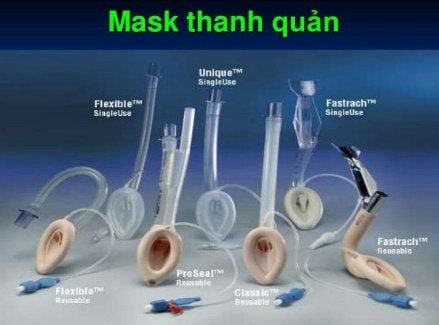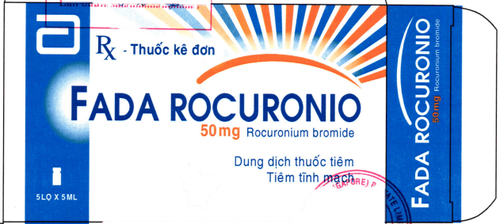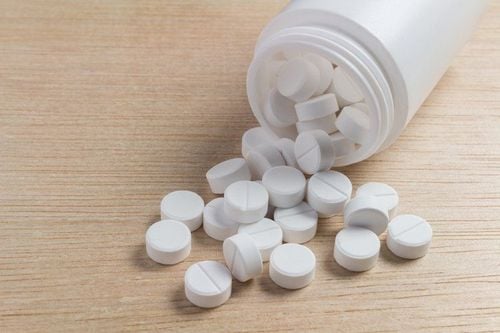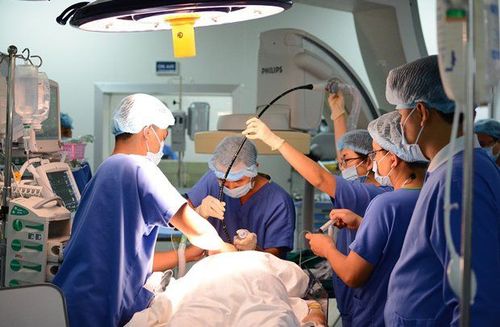This is an automatically translated article.
The article was professionally consulted with resident Doctor Duong Van Sy - Doctor of Pediatrics - Neonatology - Department of Pediatrics - Neonatology - Vinmec Hai Phong International General Hospital.Airway control in infants and children is especially important in cases of respiratory failure, cardiac arrest due to trauma, tumor, disease,... Airway control in children has many other points. compared with adults, due to anatomical as well as pathological characteristics in children.
1. Differences between the airways in infants, children and adults
The airways in infants and young children have the following characteristics:Input from the larynx to the lower border of the cricoid cartilage. funnel, wedge, horn
There are 5 biggest differences between the airways in infants, children and adults as follows:
The larynx is higher in children
The larynx is higher in children (C2-3) than the larynx. with larynx in adults (C4-5)
Relatively large tongue
Leads to:
Obstruction of the airway Force the child to breathe through the nose Difficult to see the larynx Straight tongue endotracheal light fully lifts the epiglottis, favorable Pediatric Intubation (Intubation) Vocal cords angled
Leads to:
Children's vocal cords attach to the trachea more angled, while adult vocal cords are more perpendicular; Intubation of the nasal passage is difficult because when blinded, the endotracheal tube is more easily located at the anterior margin than in the trachea. Different epiglottis shape
Adults have wider epiglottis, axis parallel to trachea; Children's epiglottis has an omega (Ώ) shape, the axis always creates an angle with the trachea; This makes it difficult to lift the epiglottis with the endotracheal tube. The larynx in children is funnel-shaped, the narrowest part is in the cricoid cartilage
The larynx in children is funnel-shaped, in which the narrowest part is at the cricoid cartilage because this part is underdeveloped in children, while the narrowest place is at the opening 2 A tight-fitting glottis
Intravaginal cord can cause edema and injury after extubation. Non-balloon endotracheal intubation is more appropriate for children < 8 years of age.
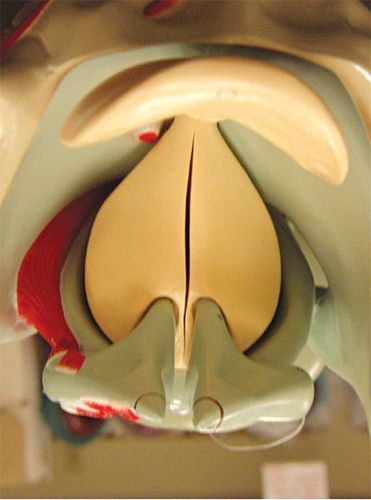
2. Purpose of airway control in infants and young children
Airway control in infants and young children helps to protect the airways, provide adequate oxygenation and ventilation. There are many causes of abnormal airways in infants and young children, requiring intervention such as:Congenital neck tumors (cystic teratomas, cystic hygroma, lymphoma, Dermoid cysts, lymphangiomas, neurofibroma, hemangioma). Congenital airway abnormalities (Choanal atresia, laryngeal web, tracheomalacia, tracheoesophageal fistula, laryngomalacia, laryngospasm, angioplasty, tracheal stenosis) Congenital abnormalities (Turner, Down's, Pierre Robin Syndrome, Treacher) Collin, Goldenhar, Achondroplasia, Hallermann-Streiff, Apert, Crouzan) Inflammatory conditions (epilepitis, peritonsillar abscess, acute tonsillitis, acute croup, croup, posterior pharyngeal abscess, nasal congestion, bacterial tracheobronchitis) bacteria, adenoidal hypertrophy, juvenile rheumatoid arthritis ) Trauma (tears, burns, fractures/dislocations, lymphatic/venous obstructions, post-intubation laryngitis, respiratory trauma... Pathology... Metabolic (mucopolysaccharidosis, congenital hypothyroidism, glycogen storage disease, Beckwith Wiedemann syndrome, hypocalcemic laryngospasm) In fact, up to 80% of cardiac arrests in infants and young children are due to failure respiratory failure, which occurs mainly in infants less than 1 year of age. Interventions to control airways are particularly important to maintain child's life in this case. The most recorded respiratory incidents are trauma cases.

2. Airway devices commonly used to control airways in children
Depending on the cause and condition of the disease, the doctor will choose the appropriate airway device to open the airway, control and maintain the child. Some commonly used devices include:2.1 Transparent plastic mask Selecting a transparent plastic mask to clear the airways for children is often chosen with a minimum dead space, and helps to observe secretions, vomit in the mouth as well as lip color. easy.
2.2 Oral cannula Pay attention to choosing the right mouth cannula size, check by placing it close to the child's face, so that the tip of the cannula touches the corner of the lower jaw.
2.3 Endotracheal light Some notes on choosing an endotracheal lamp for airway control in children are as follows:
Handle
Small handle suitable for use with small blade, suitable for the anatomical size of the child infants and young children.
Blades
For infants and children under 2 years of age, a straight blade is recommended, as the elongated tip and small ridge provide better laryngeal visibility. The doctor can easily manipulate the epiglottis due to the small oral cavity.
Children over 5 years old can use the curved lamp blade.
Select blade size
2.4 Endotracheal tube Normally, an endotracheal tube without a balloon is used for children under 6 years of age (with a diameter of 5.5mm or less). Select the endotracheal tube size as follows:

Vinmec International General Hospital has a team of qualified, experienced and reputable medical doctors in the industry with academic titles and high degrees. Here, there are not only a team of good doctors and nurses in the country, but also doctors from Japan and Singapore who provide patients with the most effective treatment regimens.
The medical equipment system is very modern and modern, greatly supporting the process of accurate disease detection and effective disease treatment. The hospital environment is clean, the working style of the staff and doctors are professional, dedicated and dedicated to bring comfort and trust to the patients.
Please dial HOTLINE for more information or register for an appointment HERE. Download MyVinmec app to make appointments faster and to manage your bookings easily.





